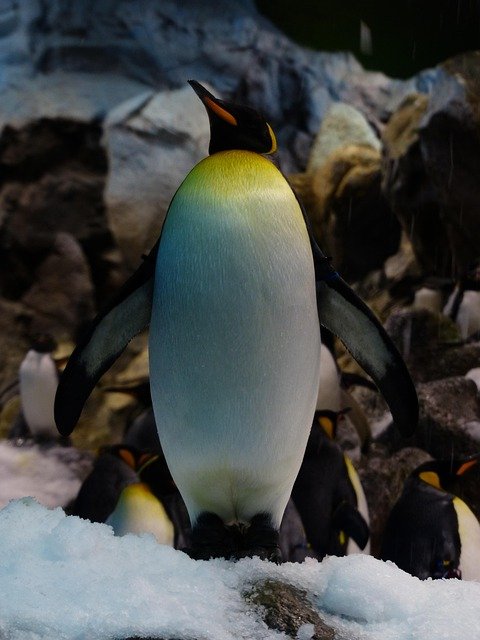**Title: "The Social Dynamics of Penguin Colonies: Unraveling the Complex Interactions

The Social Dynamics of Penguin Colonies: Unraveling the Complex Interactions
Penguins are often celebrated for their charming waddles and striking tuxedo-like appearances, but beneath their endearing exterior lies a complex social structure that is both fascinating and essential for their survival. In this post, we will delve into the intricate social dynamics of penguin colonies, exploring how these remarkable birds interact, communicate, and cooperate in their harsh environments.
The Structure of Penguin Colonies
Penguin colonies can vary in size from a few dozen to several thousand individuals, depending on the species and environmental conditions. These colonies are typically organized into hierarchical structures, where individuals establish roles based on age, sex, and breeding status. For example, dominant individuals often have priority access to resources such as food and nesting sites.
Types of Interactions
Social Grooming: One of the most important social behaviors observed in penguin colonies is social grooming, or allopreening. This behavior serves multiple purposes, including maintaining feather health, strengthening social bonds, and reducing stress among colony members.
Vocal Communication: Penguins are known for their distinctive vocalizations, which play a crucial role in their social interactions. Each species has its own set of calls used for various purposes, such as attracting mates, signaling alarm, or coordinating group movements. Notably, Emperor penguins can recognize their mate's call among thousands of others, showcasing their sophisticated auditory discrimination.
Cooperative Breeding: Some penguin species, like the Galápagos penguin, exhibit cooperative breeding behaviors, where non-breeding individuals help care for the young of others. This cooperation can enhance the survival rates of chicks and strengthen social ties within the colony.
Conflict and Competition
While penguins often display cooperative behaviors, competition for resources can lead to conflicts within colonies. Mating season is particularly rife with tension, as males compete for female attention and prime nesting sites. Aggressive displays, such as vocalizations and physical confrontations, are common during this time.
The Role of Environmental Factors
The social dynamics of penguin colonies are heavily influenced by environmental factors such as food availability, predation pressure, and climate conditions. For instance, during periods of food scarcity, competition can intensify, leading to increased aggression and changes in social structure. Conversely, abundant resources can foster cooperation and communal behaviors.
Conclusion
Understanding the social dynamics of penguin colonies provides valuable insights into the complexities of animal behavior and the evolutionary strategies that enable these birds to thrive in some of the planet's most challenging environments. As researchers continue to study these fascinating creatures, we gain a deeper appreciation for the intricate web of interactions that define their lives.
By exploring the social dynamics of penguin colonies, we not only learn about their behaviors but also about the broader implications for social structures in the animal kingdom. The resilience and adaptability of these birds continue to inspire researchers and wildlife enthusiasts alike.
